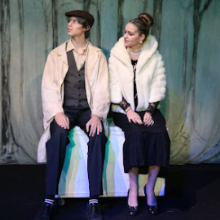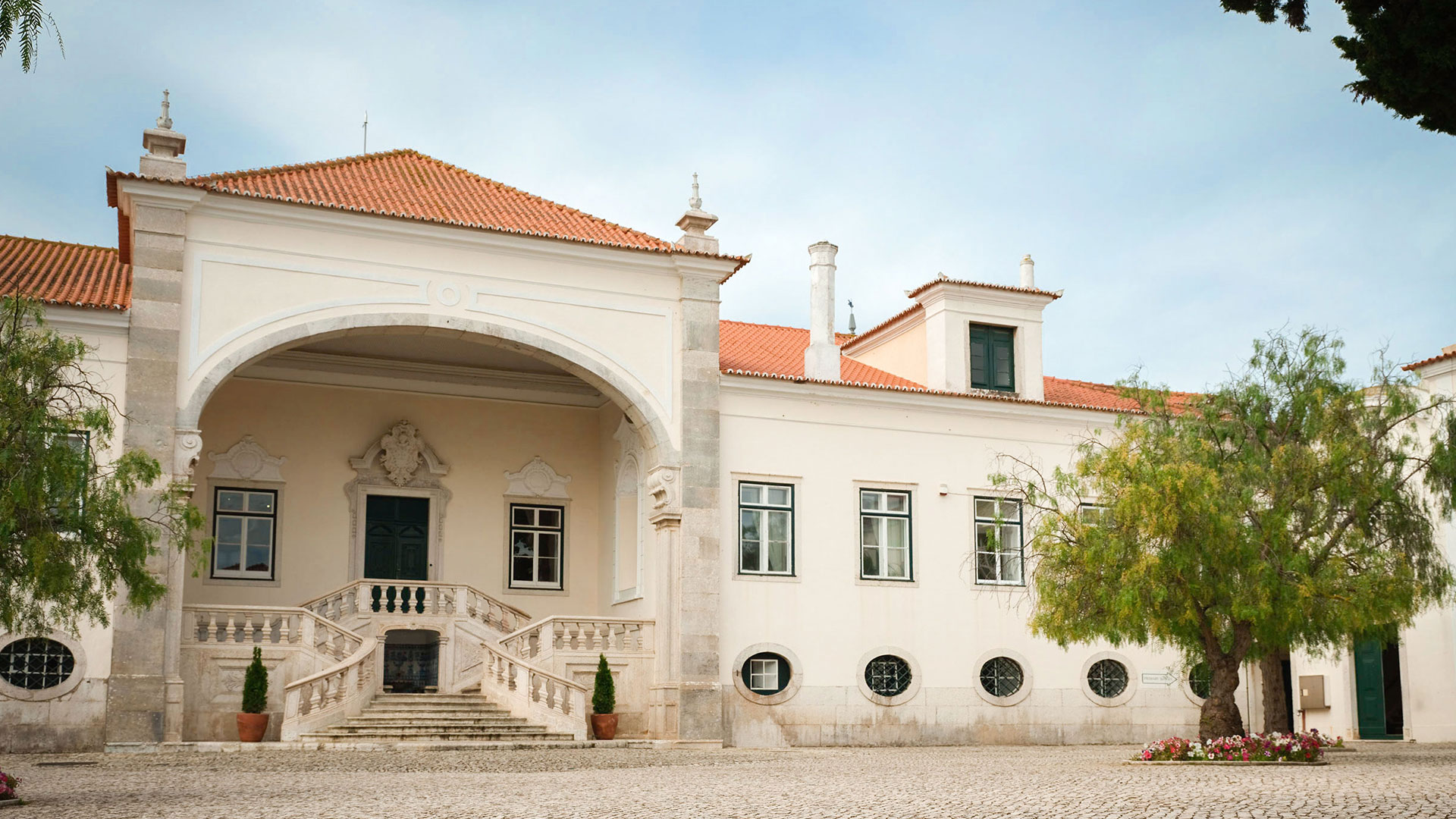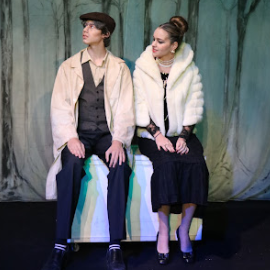Celebrating “The Visit” Secondary School Performances

Friday 2nd and Saturday 3rd December saw the Main Hall doors thrown wide open to welcome over 320 audience members into the village of Slurry, the setting for ‘The Visit’, our high school production, performed beautifully by a secondary ensemble.
Comments from the crowd were overwhelmingly positive as they pondered the thought-provoking content, cheered the high-quality performances and revelled in the world they were transported to and the characters they encountered. The cast has worked tirelessly during this first term, skillfully guided and directed by Mr Keith Harle.

The energy and talent shared by all in the process have built lasting memories both on and off the stage. Stand-out performances were given by lead actors Bianca del Fabbro, and Tomás Andrade and huge congratulations go out to everyone involved. Make sure to click on the link for the digital programme to see the full cast and crew list. Every person in the ensemble was responsible for making the play the resounding success that it was.
Interview with Mr Harle about the play and his creative journey:
Where did the play come from/How did it originate?
Friedrich Durrenmatt described The Visit as a tragicomedy saying, "Tragedy overcomes aesthetic distance whereas comedy creates it.” And adds that “tragedy generally deals with history whereas comedy treats the present day.”
He wrote the play as a reaction to the Swiss authorities, especially the banks, facilitating the movement of stolen money and art treasures sacked by the Nazis before, during and after the second world war. Among the many themes in The Visit: greed, wealth, and revenge are among the more prominent. It is interesting to note that the surname of the principal billionairess character Durrenmatt created is Zachanassian. This is a composite of the three richest men in the world at the time Durrenmatt wrote the play in 1956: ZACHov (A Russian Arms Dealer) ONASSis (A Greek Shipping Magnate), and GulbenkIAN (An Armenian businessman exploring oil in what is present-day Iraq). One of the themes explored in this production is how far people will go to better themselves financially and to understand the power and influence of money.
What images sprang to mind when creating the play?
My own take on this tragicomedy conjured up the image of a see-saw. When I became aware of the continual referencing of comedy and tragedy, I saw a constant bouncing back and forth between the two. A see-saw is, of course, a playful device. However, as we all know, we can rise above the seat in a strong upward trajectory or crash down with a painful bump. The central character of Alfred Ill fits into that narrative: as we, the audience, and the characters around him do not recognise, or fail to see, the seriousness of the situation and just laugh at it. There are many examples of this in the arts today, nearly 70 years after the play was written. For example, in the films of Quentin Tarantino, the audience often finds themselves laughing at the most horrific situations. One has the sense that Tarantino, like Durrenmatt before him, is trying to make his audience feel guilty and makes them feel that they “should not be laughing at this. This is the fascination of tragicomedy for me.
Do you think the play is predictable?
An interesting experience occurred during the preliminary reading of the play with the production team. At the end of Act Two, before the third and final act, we paused and asked each person present what they thought was going to happen/how the play would finish. There were many very different responses, but nobody, I believe, predicted the real outcome. This serves as yet further proof of the power and importance of Durrenmatt’s play.
What makes a good drama?
I have long felt and believed that effectively powerful drama is about intriguing people in terrible situations or terrible people in intriguing situations. This is certainly what I felt when I first read The Visit. I have tried to tell a story that is probably more pertinent today than ever as it centres upon the dangerous potential of wealth and greed and how far that can entrap, corrupt or even destroy one's morality.
How do you cast a play/hold auditions?
When directing a major school production, a personal philosophy is that if someone turns up to the initial casting and is enthusiastic about being involved in the play, they will be, regardless of cast numbers. Consequently, this often involves creating/inventing new characters and text that does not exist in the original. Indeed several of the characters in The Visit fit that description. A personal hate of mine is typical auditions where people have to prepare a scene/speech. I prefer to set tasks or improvisations based on situations/relationships in the play to see how people react/interact naturally.
What inspired you to direct The Visit?
The many Inspirations and stimuli for this project include The Czechoslovakian film “Closely Observed Trains'' directed by Jiri Menzel, Yugoslavian film director Emir Kusturica's “No Smoking Orchestra”, the faces painted by the German Expressionist Max Beckmann and the films of Wes Anderson. English Restoration Comedies are full of rich characters whose personalities and behaviour are often strongly suggested by their names. Pinchwife (whose wife is stolen from him), Lady Fidget, and Sir John Brute are some examples. I borrowed from this device of giving every character in our distinctive production names that would help the actors explore their characterisations physically and vocally in rehearsal and performance. Names include Mayor Blowhardt (who loves the sound of his voice), the hypochondriac Doctor Neherwell, and the alcoholic teacher Tipplesipper to name a few.
How closely do you follow the original script?
I based much of this production on the original 1960 Patrick Bowles translation of Durrenmatt’s The Visit (originally written in German in 1956), partly due to it being out of copyright as well as the most faithful translation from the original. However, as is my want, I have adapted, edited and even created scenes and characters that did not exist in the original. This was to make it more relevant today, as well as to make it more coherent and include a larger cast. I have also added very specific music to create atmospheres and meaning and act as transitions between scenes.
Can you say something about the people you have been working with/who have helped you?
I am so fortunate to have been able to work alongside Zoe Weiner as the producer of The Visit. Her endless enthusiasm, positivity, and incredible organisational skills have helped make my life much easier by not only offering me more space to work on shaping and exploring my ideas but also reducing the need to stress over production issues. I would not have had such luxury without her at my side. One of the most important lessons she has taught me is to relinquish responsibilities and to delegate. I offered some makeup ideas, and Zoe took them to another level with a student makeup team who have produced creative excellence.
I am also blessed, once again, to be working with my “Design Dream Team”: Madalena Pareira, who has designed and built the set, and Vivi Harle, who has done an equally outstanding job designing and making costumes. This is the fourth production that we have worked on together. The extraordinary thing about both of them is that after reading the play, I will normally give them an outline of my intentions for creating the world of the play, which might be a few words or themes to explore; they will then go away and come back with their own twist on what I have said. The result is that I then have several important pieces of the jigsaw puzzle in place to start building and fleshing out the world of the play and the characters who inhabit that world. Neither of them would be out of place working full-time in professional companies anywhere, and as a team, they would be formidable.
I am also indebted to my friend and colleague Steven Jones who was my initial sounding board for fielding my initial concepts for the production and ideas I wanted to explore. His positive, trustworthy feedback was and has been invaluable.
Drama Department
Get involved in theatre In term 2:
There are many further opportunities for secondary school students to get involved with theatre. Look out for more information at the beginning of January via The Week Ahead, Student/Parent Portal, Student Briefing and messages in tutor time:
Portuguese Play - Duas Pessoas e uma Ilha Sozinha by Ondjaki.
As part of the PANOS theatre festival run Teatro Nacional Dona Maria II.
Years 9/8º - 12
House Plays
Completely student-directed and student-led, each house will prepare a 20-minute play ready for a gala night of performances and prizes.
All secondary students
ISTA Middle School Festival (International SchoolsTheatre Association)
Hosting 100 students from 8 different international schools for a 4-day theatre festival led by professional artists.
Years 7/6º - 9/8º


















.png&command_2=resize&height_2=85)











